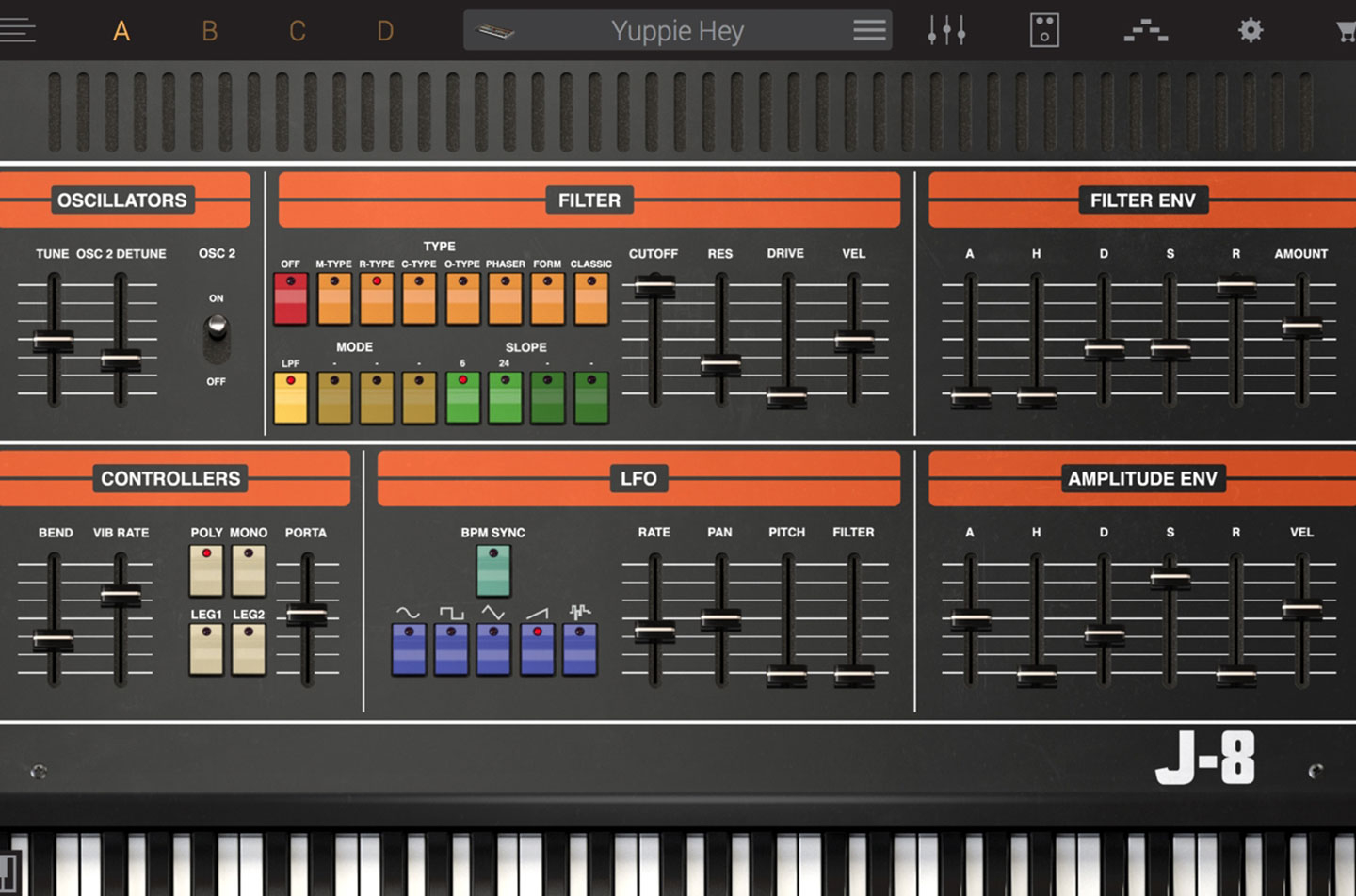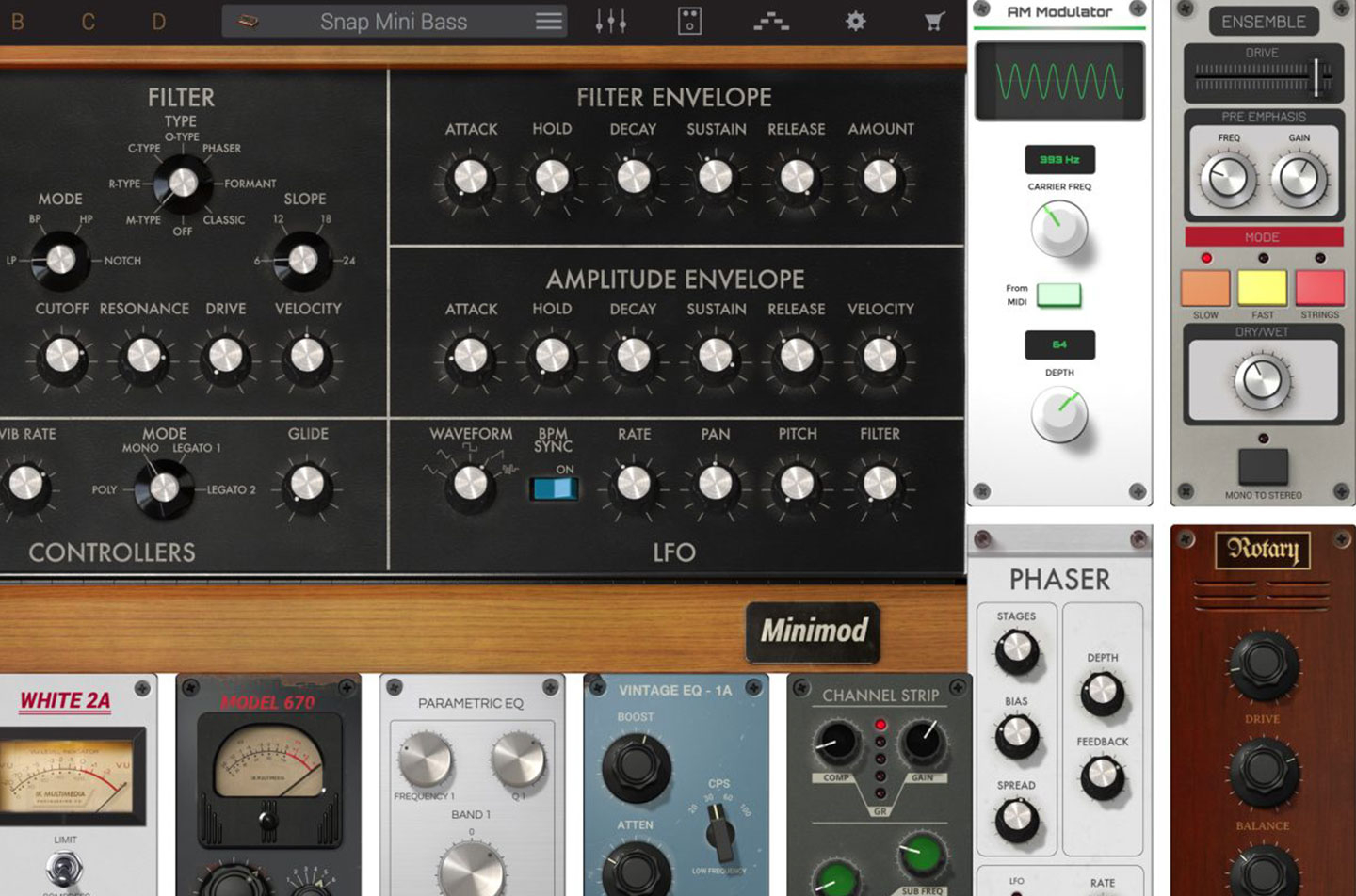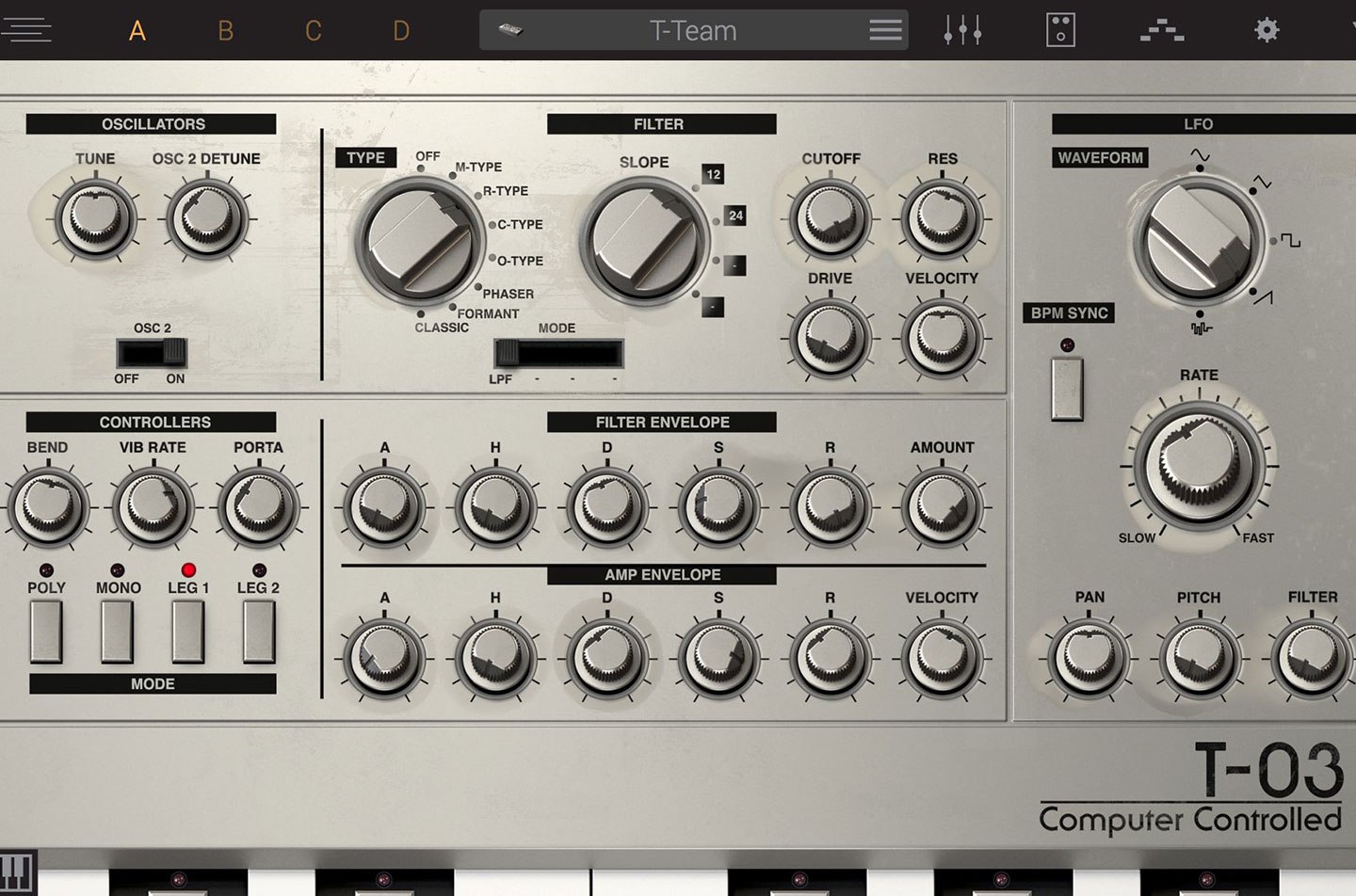- "Synergy" is one of those buzzwords that is often used ironically these days. But for companies with product lines developed over decades of research and development, looking at potential synergies within their own catalogue just makes sense. One recent example is the newly released virtual instrument Syntronik by IK Multimedia, which borrows from SampleTank's multi-sampling platform, the mixing engine of T-RackS and the analogue-modelled processing effects of AmpliTube in order to create a completely new package comprising 17 virtual synthesisers. They put this technology in the hands of a team lead by Erik Nordlander, whose resume includes the Alesis Andromeda—a synth sometimes credited with paving the way for the renaissance of analogue synthesis.
Nordlander is also associated with Sonic Reality, a company that was formed back in 1996 to create sample libraries for hardware samplers. More recently, it has partnered with IK Multimedia on products like SampleTank and Sonik Synth. Erik had been developing a sample library of his own impressive synth collection on the side and decided last year to collaborate with IK Multimedia to transform it into a brand new instrument. In addition to the existing technology, IK Multimedia developed a brand new sample playback algorithm for Syntronik called DRIFT, which was designed to mimic the free-running nature and pitch variations of an analogue synthesiser.
IK Multimedia offers Syntronik in two different flavours: a full package for $299 (or less if you already own IK products) that includes all 17 of the virtual instruments, and a free version that ships with a sample of presets that can be expanded with à la carte purchase of individual instruments for $49 each. Installation of the full version is a bit cumbersome, as you have to download the main product and all 17 instruments as separate installers. Once Syntronik is registered, the downloads are only available in your User Area for 180 days, after which time you'll need to pay $10 to unlock them again. The instrument can be run standalone or as a plug-in (VST2, VST3, AU and AAX formats) but if you're running an old DAW, you should be aware that it is only available in 64-bit.
Syntronik's UI includes five main windows, namely the Instrument Browser, the Synth Panel, the Layer Panel, the Effects Panel and the Arpeggio Panel. You'll find the list of presets based on what instruments are installed in the Browser section. The 17 instruments are represented visually and include over 2000 categorised presets built on samples from 38 real-world instruments (similar instruments like the three Roland Jupiters are grouped together into one). The usual classics are well represented here—Moogs, Oberheims, Rolands, Sequential Circuits, Yamaha, ARP, PPG and of course the Alesis Andromeda. From a workflow perspective, the Browser takes some getting used to. It's possible to filter by instrument and/or category but it's not always obvious which filters are currently active. Also, it's easy to accidentally delete a preset when trying to close the browser due to a confusing use of X icons.
Once you load a preset (and figure out how to close the browser), you're greeted with a custom instrument UI resembling the original hardware that gives you a limited set of parameters to play with. Since all of Syntronik's sounds are based on samples, this control is mostly limited to filter, envelopes and a basic LFO that can be routed to pan, pitch and filter frequency. The analogue-modelled filters are the bright spot here. They sound great and you can mix and match a selection of seven filter models. Discovering this led me to the funny realisation that all of the instrument UIs are really just the same set of controls presented in different ways. While this makes for an interesting experience, it made me wonder why so much time was spent on this part of the overall package.
The other definite highlight in Syntronik is found in the Effects panel, which houses a set of five lunchbox-style slots where you can choose from 38 effects derived from T-RackS and AmpliTube, as well as some new designs developed specially for this instrument. Clicking on the name at the top of the slot lets you pick a new effect from the six categories: Modulation, Dynamics/EQ, Filter, Distortion, Amps and Reverb/Delay. These all sound excellent and go a long way in overcoming the sound design limitations inherent in the sample-based core of the presets. My only wish here is to be able to re-order the effects in this panel by clicking and dragging.
From a sound perspective, I was pretty impressed with what Syntronik could do using the combination of the DRIFT algorithm, a solid sample base and the modelled filters. When it comes to UI/UX however, there is definite room for improvement. As I've already mentioned, the different menus and preset saving options feel disjointed and unintuitive. (Albeit, there is a consistent icon for saving parameters.) Syntronik gives you the ability to layer up to four sounds together but doesn't ship with any multi-layer presets, and there's no easy way to mute/solo the layers without menu diving—however, IK are aware of this and plan to make improvements in a future update. Perhaps most distressing is the lack of host automation—Syntronik only allows you to assign MIDI CCs to controls via MIDI Learn. As a player instrument, it does the job well with its big bank of presets that capture the sounds of the classic synthesisers. If you're a sound designer looking for detailed control however, this one may not be for you.
Ratings:
Cost: 4.0
Versatility: 3.2
Ease of use: 3.7
Sound: 4.7
 The other definite highlight in Syntronik is found in the Effects panel, which houses a set of five lunchbox-style slots where you can choose from 38 effects derived from T-RackS and AmpliTube, as well as some new designs developed specially for this instrument. Clicking on the name at the top of the slot lets you pick a new effect from the six categories: Modulation, Dynamics/EQ, Filter, Distortion, Amps and Reverb/Delay. These all sound excellent and go a long way in overcoming the sound design limitations inherent in the sample-based core of the presets. My only wish here is to be able to re-order the effects in this panel by clicking and dragging.
The other definite highlight in Syntronik is found in the Effects panel, which houses a set of five lunchbox-style slots where you can choose from 38 effects derived from T-RackS and AmpliTube, as well as some new designs developed specially for this instrument. Clicking on the name at the top of the slot lets you pick a new effect from the six categories: Modulation, Dynamics/EQ, Filter, Distortion, Amps and Reverb/Delay. These all sound excellent and go a long way in overcoming the sound design limitations inherent in the sample-based core of the presets. My only wish here is to be able to re-order the effects in this panel by clicking and dragging. From a sound perspective, I was pretty impressed with what Syntronik could do using the combination of the DRIFT algorithm, a solid sample base and the modelled filters. When it comes to UI/UX however, there is definite room for improvement. As I've already mentioned, the different menus and preset saving options feel disjointed and unintuitive. (Albeit, there is a consistent icon for saving parameters.) Syntronik gives you the ability to layer up to four sounds together but doesn't ship with any multi-layer presets, and there's no easy way to mute/solo the layers without menu diving—however, IK are aware of this and plan to make improvements in a future update. Perhaps most distressing is the lack of host automation—Syntronik only allows you to assign MIDI CCs to controls via MIDI Learn. As a player instrument, it does the job well with its big bank of presets that capture the sounds of the classic synthesisers. If you're a sound designer looking for detailed control however, this one may not be for you. Ratings: Cost: 4.0 Versatility: 3.2 Ease of use: 3.7 Sound: 4.7
From a sound perspective, I was pretty impressed with what Syntronik could do using the combination of the DRIFT algorithm, a solid sample base and the modelled filters. When it comes to UI/UX however, there is definite room for improvement. As I've already mentioned, the different menus and preset saving options feel disjointed and unintuitive. (Albeit, there is a consistent icon for saving parameters.) Syntronik gives you the ability to layer up to four sounds together but doesn't ship with any multi-layer presets, and there's no easy way to mute/solo the layers without menu diving—however, IK are aware of this and plan to make improvements in a future update. Perhaps most distressing is the lack of host automation—Syntronik only allows you to assign MIDI CCs to controls via MIDI Learn. As a player instrument, it does the job well with its big bank of presets that capture the sounds of the classic synthesisers. If you're a sound designer looking for detailed control however, this one may not be for you. Ratings: Cost: 4.0 Versatility: 3.2 Ease of use: 3.7 Sound: 4.7